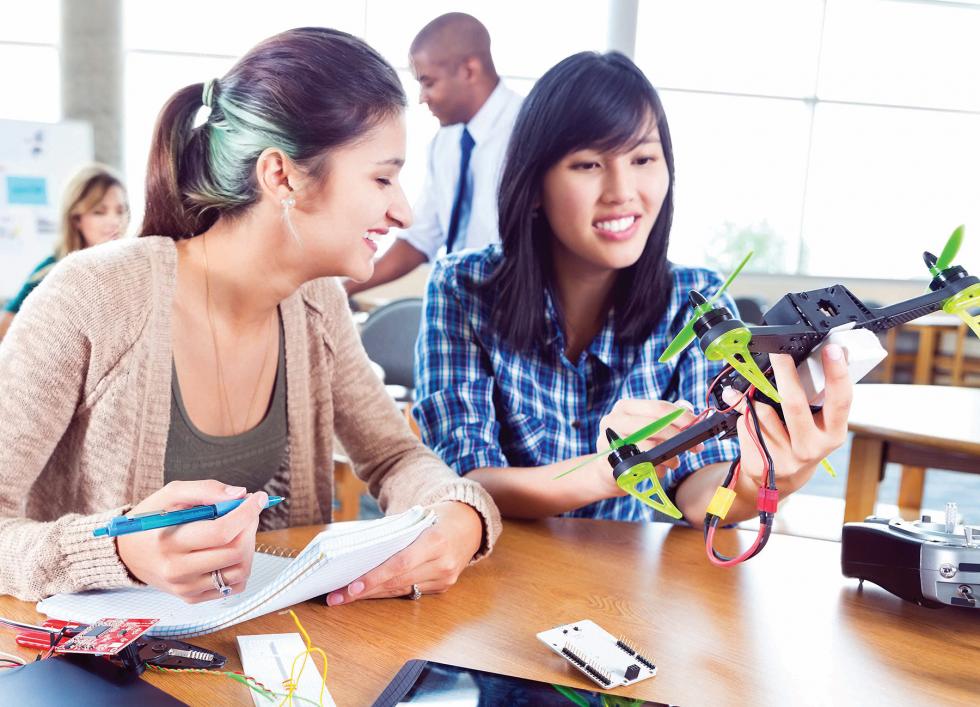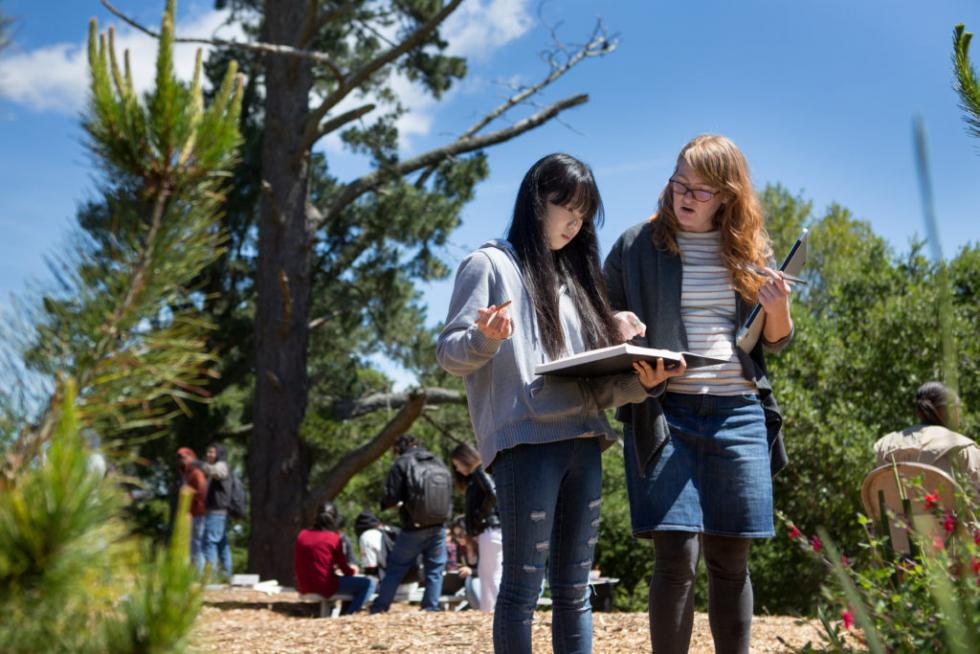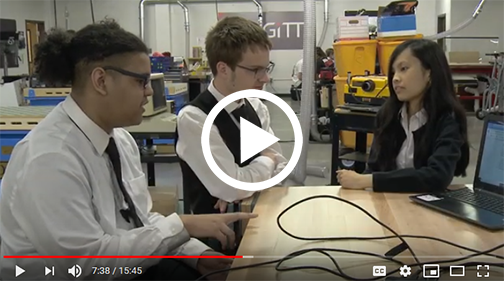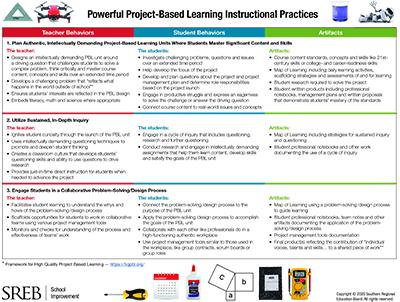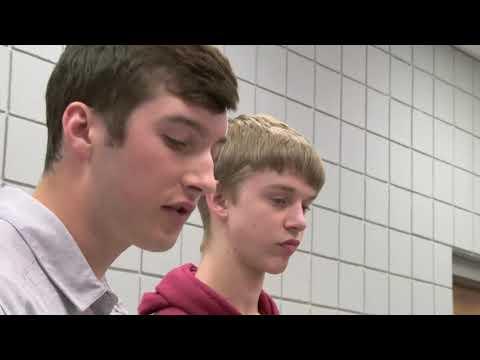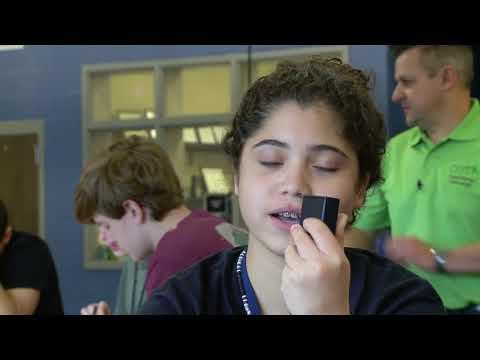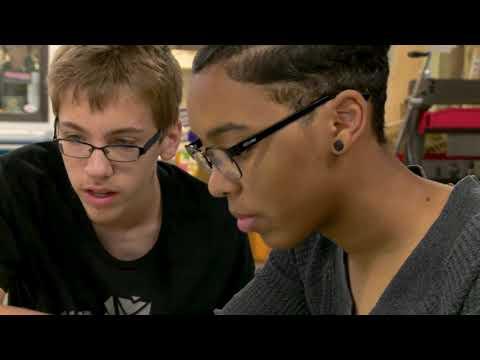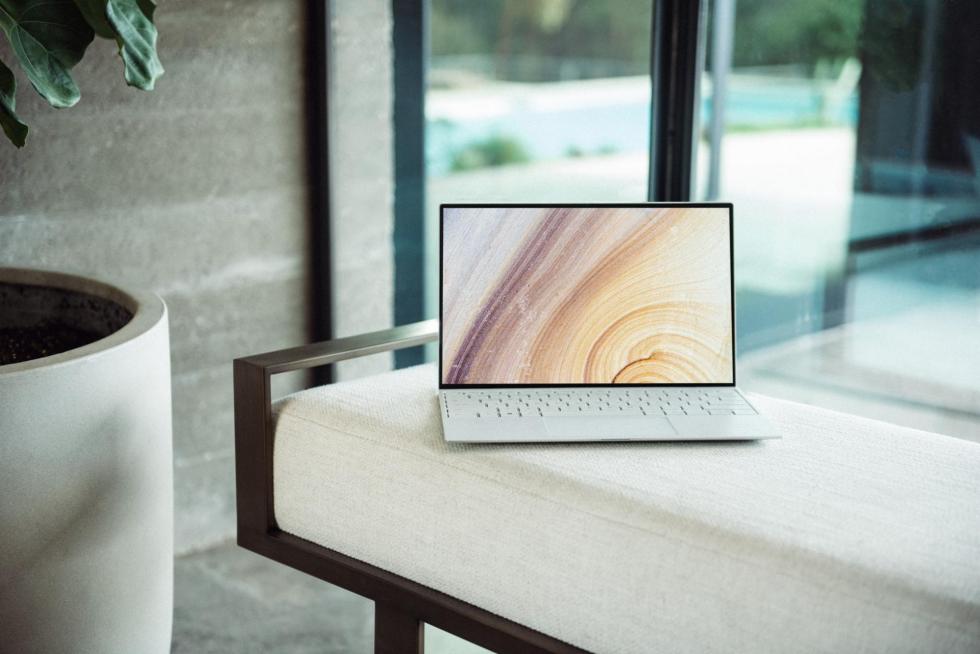Project-Based Learning
Project-Based Learning
Educators the world over agree: Project-based learning sparks creativity and helps students make the connection between the classroom and the real world. What’s more, this interdisciplinary approach to instruction empowers students to own their work, with teachers acting as facilitators of deeper learning and exploration.
A World of New Classroom Resources
Students can discover the world — and educators will find a treasure of classroom resources — through SREB’s new collaboration with the National Geographic Society.
SREB is offering a free webinar series for teachers that helps them explore the National Geographic Explorer Resource Library, filled with ready-to-use lessons and activities based on the Society’s vast collection of articles, photographs and videos.
All the National Geographic Society resources are free.
SREB’s Approach to Project-Based Learning
SREB offers professional development and coaching services that build teachers’ capacity to design project-based assignments that help students master content and cultivate academic, technical and workplace skills.
Our approach to project-based learning blends our decades of experience with career pathways, work-based learning and high-quality assignments with elements of the Framework for High Quality Project Based Learning.
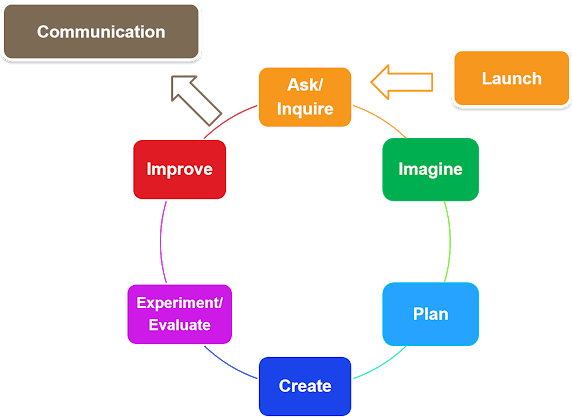 We use an industry-standard design
process to “chunk” learning throughout a project-based unit.
Academic or CTE teachers use this problem-solving process to
scaffold learning and provide just-in-time instruction as
students complete different phases of their projects.
We use an industry-standard design
process to “chunk” learning throughout a project-based unit.
Academic or CTE teachers use this problem-solving process to
scaffold learning and provide just-in-time instruction as
students complete different phases of their projects.
Powerful PBL Practices
With support from SREB, teachers incorporate six powerful practices into their PBL units:
- Plan authentic, intellectually demanding PBL units in which students master essential content and skills
- Partner with business and postsecondary leaders to plan, implement and reflect on PBL units
- Engage students in a collaborative problem-solving process
- Foster a classroom environment that supports student ownership of learning
- Promote sustained in-depth inquiry
- Offer students ongoing, purposeful feedback and opportunities to revise and reflect on their work
Customizable Support
SREB partners with states, districts and schools to design multi-day workshops that introduce teachers or teacher teams to project-based learning and engage them in designing their first PBL units. Follow-up coaching can include:
- Online planning to support the implementation of a PBL unit
- Visiting classes to observe student work or co-teach
- Examining student outcomes with teachers after a PBL unit
- Coaching teachers through problems with a PBL unit
- Developing additional PBL units
- Embedding literacy and math
- Integrating academic and CTE curricula
- Building business and industry partnerships
SREB’s approach to PBL serves as a guiding framework for our Advanced Career and Middle Grades STEM curricula and is a natural extension of our Powerful Literacy Practices and Powerful Mathematics Practices.
Powerful Project-Based Learning Instructional Practices
Anatomy of a Project-Based Learning Project: Go Baby Go!
Students at Wood County Technology Center in Parkersburg, West Virginia, are re-engineering and building motorized toy cars that help children with disabilities gain independent mobility and improve their cognitive, social and motor skills. In partnership with SREB, Teaching Channel is visiting classrooms across the United States in which students are creating projects that make a powerful difference in their communities while also mastering advanced academic and technical content and skills.
Anatomy of a Project-Based Learning Project: The Fleet Car
Students at the Center for Advanced Technical Studies in Chapin, South Carolina, become real scientists, engineers and technicians as they design a fleet of vehicles powered by alternative fuel sources. In partnership with SREB, Teaching Channel is visiting classrooms across the United States in which students are creating projects that make a powerful difference in their communities while also mastering advanced academic and technical content and skills.
Anatomy of a Project-Based Learning Project: When the Levee Breaks
Students at The Center for Design and Technology at Lanier High School in Buford, Georgia, study the effects of flooding on natural and built environments and design projects that protect communities from natural disasters. In partnership with SREB, Teaching Channel is visiting classrooms across the United States in which students are creating projects that make a powerful difference in their communities while also mastering advanced academic and technical content and skills.


